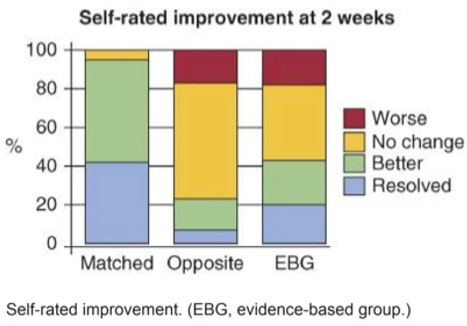Movement in general is great for people in pain. If you move in the right direction, however, it can make a tremendous difference.
So how do you find this direction?
A McKenzie Method aka Mechanical Diagnosis and Therapy (MDT) Assessment.
If your condition has what is called a Directional Preference, which would be confirmed during the MDT exam, and you exercise in that Directional Preference, your chances of recovery are much higher.
Directional Preference is the clinical phenomenon where a specific direction of repeated movement and/or a sustained position results in a clinically relevant improvement in either symptoms and/or mechanics.
A 2004 study looked into this phenomenon of Directional Preference.
312 patients with low back pain and/or sciatica received a standardized McKenzie exam classifying them by their pain response, specifically eliciting either a Directional Preference (an immediate, lasting improvement in pain from performing either repeated or sustained lumbar flexion, extension, side gliding, or rotation tests), or No Directional Preference. Of the 312 patients in the study, 230 (74%) had a Directional Preference.
Following the exam, all patients who demonstrated Directional Preference were randomized into three groups, receiving either:
· Group 1 – Exercise matched to the directional preference (extension, flexion, side glide, or rotation)
· Group 2 – Exercise directionally opposite the directional preference
· Group 3 – Evidence-based management, which included advice to stay active, reassurance that they will recover, use of over the counter anti-inflammatory medications
Over 30% of the patients in the Group 2 and Group 3 withdrew because of a failure to improve or because they worsened, compared to zero drop outs in Group 1.
Over 90% of Group 1 rated themselves better or resolved at two weeks, compared to just over 20% of Group 2 and just over 40% of Group 3.
These findings show that proper classification and diagnosis makes a tremendous difference. If you are given the exercise that correlates to your classification your chances of recovery are greatly improved.
The good news is that the McKenzie Method (MDT) is the primary assessment method used in our clinic.
Long A, Donelson R, Fung T. Does it matter which exercise? A randomized control trial of exercise for low back pain. Spine, Dec 1;29(23):2593-2602, 2004

